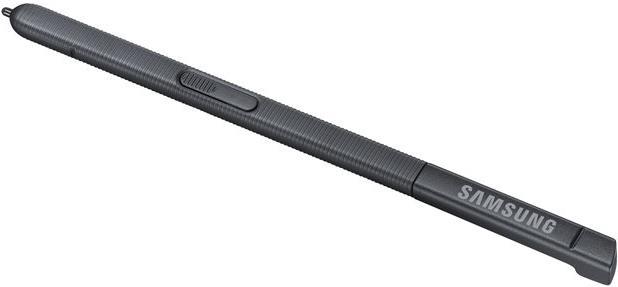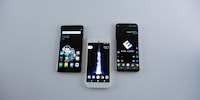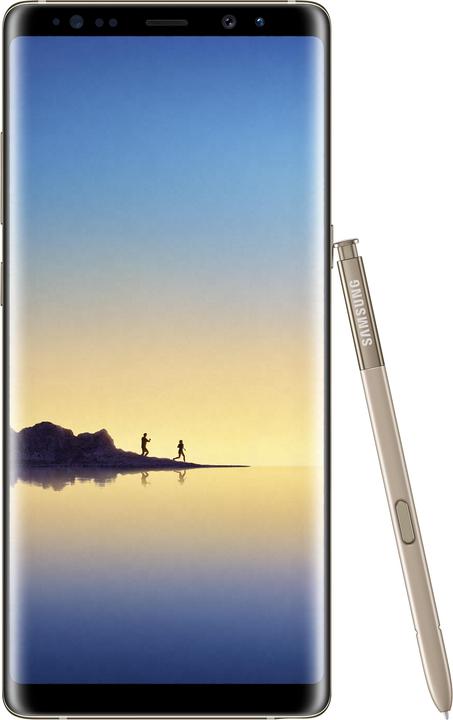
Samsung Galaxy Note 8 – It’s big, it’s strong and it’s armed with a pen
When Samsung unveiled the Galaxy Note 8 in London, it was clear this was a smartphone that meant business. The Galaxy Note 8 wanted to be able to do more, and do more it most certainly can. The presentation of this highly speculated smartphone showed Samsung had no intentions of backing down.
The Samsung Galaxy Note 8 doesn’t really know what it wants. It’s big and shiny, appealing to private users and comes up trumps for business use as well. This makes it all the more unusual for the presentation before the hands-on demonstration to be set against the backdrop of the London Leadenhall Building. The affectionately named the Cheesegrater became the stage for Samsung’s unveiling of DeX, a colouring book, cameras and note-taking functions. The South Korean company probably didn’t know what the Note 8 wanted to be, so they decided the Samsung Galaxy Note 8 is everything.

The Note 8 makes it clear Samsung is still taking the aggressive approach it announced at the Mobile World Congress in Barcelona last February. The Note 8 is not just a device for a bit of phoning and texting. It’s also 5G-ready and prepared to take on the business sector. For once, its opponent isn’t one of the usual suspects such as Apple or Microsoft.

The pen I miss even though I’ve never had one before
Fans of the Note series have been panic-stricken for months. The question on everyone’s lips is, will the Note 8, with its confirmed 6.3-inch screen diagonal still have a pen, otherwise known as a stylus? Samsung said this was a given. After all, a Note without a pen isn’t a Note.

What lets the stylus down for me as a pen lover is the really soft feel. Given the Note 8 is only a few grams heavier than the Galaxy S8+, some weight savings also had to be found in the pen. This translates into a stylus that is short, light and unable to do much more than a few scribbles. In other words, you can forget writing anything of length or copywriting. However, I must admit that I prefer more bulky ballpoint pens for journalism. At the moment, I carry around a Lamy Taxus that has a light wood shaft.
What the stylus lacks in writing ability, it makes up for in functionality. As someone who sends a lot of links and extracts of text on a daily basis, I find the copy-paste function one of the most important. On Android devices, this is a bit onerous. Marking and selecting text is a real pain. But with this pen it is a lot easier, as the only thing coming in contact with the screen is the tip of a pen rather than a broad finger.
Given that Samsung works on its own system internally, I was under impression that all of Samsung’s’ stylus technology was compatible with the Note 8. That means the Staedtler pencil stylus that Samsung unveiled at the MWC in Barcelona also works with the Note 8. Or it should work. I say that because I haven’t actually road-tested it yet. If you still have one of the older Notes and a Staedler stylus and can put my theory to the test, please let me know in the comments if it works. I’ll try to test it as quickly as possible, but if you’re quicker, I’d appreciate the help.
For the Samsung Galaxy Book, the manufacturer has tried to make the pen imitate the feel of a pencil by replacing the lead with a digital equivalent. I hope other pen manufacturers follow suit. I wouldn’t say no to a Caran d’Ache stylus. Or better still, a standard ballpoint refill I can put into my pen – assuming the pen can be used as a stylus.
The trick with AMOLED
The Note 8 makes the most of its AMOLED display function. The secret to this kind of display is that it is always on. As long as the phone is running, the screen can always accept input. Let me rewind slightly. AMOLED stands for active matrix organic light-emitting diode. The key here is the active matrix part. Thanks to active matrix technology, we can control each individual pixel on the screen. If a pixel is true black or HEX #000000 – what we just call black in day-to-day speech – it isn’t lit, but all the technology beneath it is still working. I’m simplifying slightly, but in essence, it means the touch feature works even when the screen is off.
When the screen is off and the phone is locked, you just need to whip out the pen and scribble on the display. You’ll be writing white on black. Once you’re done, you can save your doodles as a note. Basically, your screen acts as a notepad.
The Note 8 is fast. Very fast, even. So when it’s a question of speed, it doesn’t make much difference if I grab a notepad out my bag or scribble my ideas on the Note. That is something that appeals to me a lot. On the Note 8, the virtual notepad lets you save up to 100 pages per note – one page is one screen. In most cases, that is plenty of space.
Samsung embraces split-screen
Some smartphones now come with split-screen mode. This means you can run two apps side by side. This is perfect for large displays. Or rather, it would be perfect.
Up until now, the split-screen function has been more of a headache than helpful. Activating the feature was awkward, and then once you’d done that it was difficult to switch it off. Samsung probably realised that. That’s why the Android operating system was modified to within an inch of its life until it was almost unrecognisable and extended to include a key function the manufacturer calls Dual Apps. These are links you can place in the sidebar to open two apps at the same time. In doing so, Samsung has turned the once superfluous sidebar into a useful space and made the split-screen mode presentable.
Which apps you open on a split screen is entirely up to you. As is the layout of the display. The app you select first will appear at the top or on the left-hand side of the screen and the second, to the right or underneath depending on the position of the phone.

Admittedly, I don’t have a use case for the split screen, but that’s not because it’s a useless feature. It was quite simply too laborious, and swapping between apps with the ◻ button was quicker. I reckon the feature will be a bit like the second screen on the LG V20. I’m imagining it will be one of those things no one asked for and initially seems pretty irrelevant, but creeps into everyday use. In the end, it’ll probably be a feature you miss when it’s not there any more.
Hard edges, wide sides
The Samsung Galaxy Note 8 doesn’t just excel at software, it also stands out for its aesthetics and the ease with which it sits in your palm. The manufacturer intentionally designed the Note 8 to be less rounded than the S8 series in order to maximise screen space. After all, this is where users are supposed to be able to write, draw and work.
The larger screen size has a huge impact on how you handle the device. Instead of nice rounded sides, you feel sharp edges in your hand. Not that it is uncomfortable. On the contrary. I like it when a phone doesn’t, in the loosest sense of the word, feel slippery. The edge makes the phone seem powerful and gives it weight without it being physically heavier. I like that.
The camera I couldn’t put to the test
You’ve probably noticed I haven’t said a word about the dual camera on the back of the Note 8. Hardware-wise, this is one of Samsung’s most significant innovations. The Note 8 is the first Samsung phone to feature this kind of technology. So why am I not waxing lyrical about it? I never got to test out the dual camera in London. So while it sounds great in theory, I can’t back up any claims from my own experience.
Samsung showed off the camera at a demo station in the Cheesegrater. It was fixed into a black box that they had given a foreground and background. This let the camera glint and glitter. It was also a great environment for bokeh, in other words depth of field. Even after the photo had been taken, they were able to edit it until it was flawless and beautiful. Lovely as it sounds, it has nothing to do with the average customer’s requirements or use case.
I admittedly had the opportunity to hold the phone in my sweaty palm and test out the main functions as well as some of the extra ones. However, I only had 75 minutes with the Note 8 and in that time I had to single-handedly film a video, do plenty of fact checking and take photos. That’s why the the camera remained untested. But I’ll make up for it, I promise.
Journalist. Author. Hacker. A storyteller searching for boundaries, secrets and taboos – putting the world to paper. Not because I can but because I can’t not.



